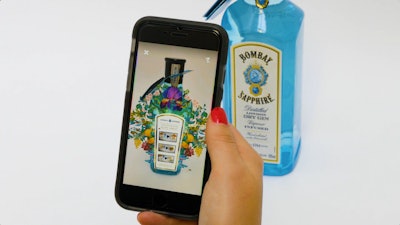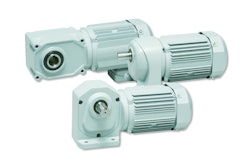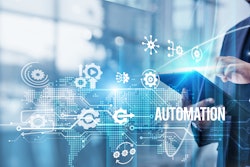According to new Smithers Pira research, The Future of Active & Intelligent Packaging to 2023, the combined active and intelligent packaging market value will reach $5.68 billion in 2018, with the active packaging market valued at $4.62 billion and the intelligent packaging market valued at $1.06 billion. The combined market is forecast to grow at an annual average rate of 5.9 percent, hitting $7.56 billion by 2023.
Active packaging demand is being driven by the desire to keep food fresher for longer, to reduce food waste and to promote more convenient packaging for consumers. Although it is more mature and has slower growth predictions compared to intelligent packaging, there are substantial development opportunities for active packaging technologies in niche markets.
Intelligent packaging, on the other hand, is at a developmental stage of the product life cycle. Intelligent packaging is a dynamic and potentially high-growth market with developments in printed electronics, microsensors, authentication platforms and the Internet of Things (IoT) driving the adoption of new technologies.
Brand owners want a usable product that adds real value to their brands, not just a technology or sub-component, or a product that is simply a short-term gimmick. Smithers Pira identifies five trends that are boosting the appeal of intelligent or “smart” packaging.
1. Consumer engagement through smart packaging
How to achieve greater consumer engagement is currently one of the biggest drivers of intelligent packaging for brand owners. Smart packaging can make a real difference in packaging the way a product is marketed. Major brand owners are seeing the value of using the pack to make direct contact with the consumer.
A recent example of smart packaging being developed to encourage consumer engagement is the strategic partnership between two U.K.-based businesses—IoT (Internet of Things) specialist Evrythng and the augmented reality (AR) developer Zappar—announced in October 2017. The partnership empowers brands to drive consumer interactions with AR experiences triggered by a QR code or similar digital trigger via Zappar’s AR content authoring and publishing platform.
A mark printed on a cereal box can encourage consumer interaction via a simple smartphone game—an approach already shown by other technology providers. The joint software platform developed by the companies allows these to be linked to Cloud-based Active Digital Identities for individual consumers that create real-time data and insights that brands can use to drive repurchase rates or other promotions.
Consumers increasingly view their smart devices as mediums to maximize personal productivity and avoid wasting time, money, and other resources. This means that mobile technologies will need to be simplified, and their connection to packaging and retailing more intuitive to use. One major future trend, the use of smartphones for payment (mPayment), is now in its infancy with demonstration stores allowing the buyer to scan the item he or she is buying and automatically pay for them without a store checkout.
As this approach to retail becomes more widespread, it provides brands with a new route into the digitally-engaged consumer’s lifestyle, via their packaging.
2. Smartphones for brand protection
Brand protection firms are already exploiting QR codes and more recently Near Field Communication (NFC) technology to protect against counterfeiting. The key advancement is that these can now be read with a standard consumer smart device, turning the 2.5 billion global smartphone users into an army of product authenticators. Adding further electronic functionality, where it was previously impossible or cost prohibitive, will accelerate this trend.
As consumers can now be empowered to identify counterfeit products at point of sale, pressure is applied backwards through the distribution chain to ensure counterfeit products do not enter the supply chain in the first place. Companies are no longer alone in pushing to solve the problem with expensive inspection and detection resources, as they can rely on the pull from a global enforcement team of NFC-enabled smartphones.
This will become the biggest deterrent against counterfeits. Once an authentication scan has been carried out, the same outlet can be utilized for follow-on engagement work.
3. Printed electronics for packaging
The commercialization of printed electronics for intelligent packaging and smart labels is rising. Printed electronics is one of the core products of the intelligent packaging revolution and has the potential to be the breakthrough technology for reducing costs and expanding functionality as well as aligning with the demand for simple and highly sophisticated tracking and inspection systems.
Several important developments are coming to commercialization around the same time to spur printed electronics development for packaging.
What the intelligent packaging market actually needs from printed electronic products and providers is to demonstrate how it can be used to interact with the customer and demonstrate how implementation platforms using silicon and printed electronics connect the user and the brands to create customer value and business for packaging and the IoT.
4. Food waste and food energy
Governments are also giving a spur to the evolution of intelligent packaging solutions. According to EU published data, about 88 million tonnes of food is wasted annually in Europe, and about one-third of the food for human consumption is wasted globally, which equates to over 1.3 billion tonnes in 2017. The EU signed a commitment in 2017 to halve the volume of waste in its own borders by half by 2030, and better packaging has a vital role to play.
Modified atmosphere packaging (MAP) and other active solutions—such as oxygen scavengers—that can double the effective shelf life of many perishable products compared with conventional packaging will continue to be central to this, and further refinements are predicted by Smtihers Pira’s analysis.
Simultaneously intelligent components—such as freshness indicators and time-temperature indicators—have benefits for the whole supply chain, not just individual elements of it. In particular, consumer behavior, such as weekly rather than daily shopping, aging populations, and more single-person households, fit with the longer life and monitoring options intelligent packaging offers. These can offer clear signals about the condition of the product, without the use of arbitrary “best before” labels, minimizing unnecessary wastage.
5. Pharmaceuticals traceability regulation
The integration of NFC technology into pharmaceutical labels is considered a forward-thinking new development that adds high value. New laws in the EU and North America will soon require unique identifiers to be added to individual drug packets in the form of a 2D datamatrix code.
Smart e-labels offer pharmaceutical companies a wealth of additional opportunities; NFC inlays enable contactless reading by smartphones and thus digital identification of pharmaceuticals. The applications include patient interaction, like dosing advice; automatic recognition of medications by injection systems; process optimization in internal logistics; and brand protection.
Smart pharmaceuticals packaging is not just about tracking and verification. Smart packaging can also include packets that record when tablets are removed, so that patient compliance to a course of treatment can be monitored objectively. The concept can be extended to make drug delivery packs that prompt the user when to take medication at the appropriate time. These provide clear instructions by voice, for example, or a scrolling display in large font. Demand for smart pharmaceutical packaging will grow further with strong gains expected for time-temperature indicator labels, based on growing cost competitiveness and the heightened presence of temperature-sensitive drugs.






















